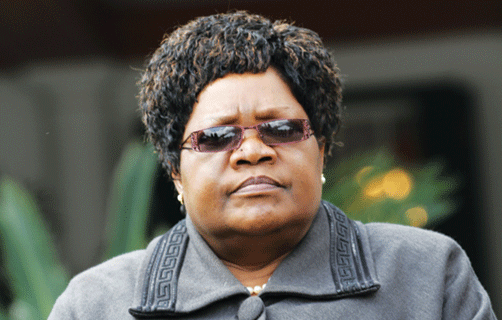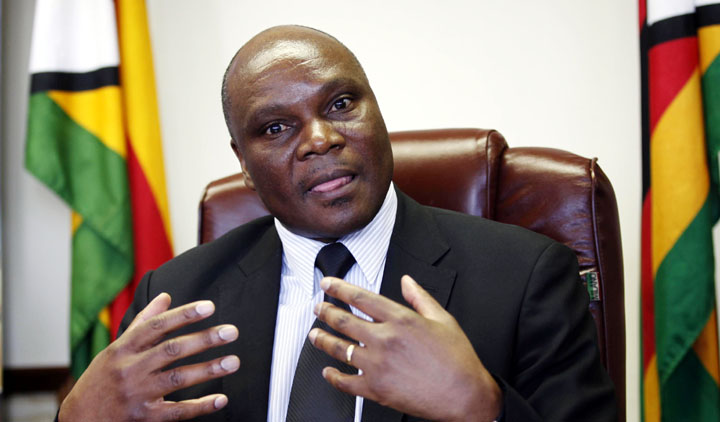
VICE-PRESIDENT Joice Mujuru’s recent utterance that the government needs more than 30 years to implement ZimAsset is a clear admission that the blueprint is a pie in the sky, analysts have said.
MTHANDAZO NYONI OWN CORRESPONDENT
Mujuru told delegates at the commemorations of the Hwange mine disaster last week that the five-year time frame for the government to achieve the objectives of ZimAsset was too short, saying the finances required for its implementation could not be raised at once.
She was responding to questions on how the government will raise the estimated $30 billion required to implement ZimAsset, in which the energy sector alone requires at least $13,6 billion, followed by the transport sector which requires $8 billion.
Mujuru added that it was important for the public to understand that ZimAsset was similar to the liberation struggle. She said the struggle was won with limited resources over a long period, adding that as long as the government was clear with its objectives and what it wants to achieve, ZimAsset was achievable in various stages.
“We fought for this country and won with no budget, no money, no car, no bicycle. So this is going to be the best budget we have ever drafted and gives us no boundaries on what we need to do, but when we talk of numbers, people might think we need billions within a day. Five years is too soon to achieve the objectives of the ZimAsset. It is the beginning of a lifetime and can take up to 30 or even 40 years,” Mujuru was quoted saying.
She also said there was still a lot that the government needed to do to educate and raise awareness on the significance of ZimAsset so that ordinary people can understand how they could contribute to its success. However, economic analysts that spoke to Southern Eye Business said Mujuru’s utterances were a clear indication that ZimAsset was not implementable within a short space of time.
“It’s more of a pie in the sky and glorified party’s manifesto rather than economic blueprint,” local economic analyst Dumisani Nkomo said.
- Chamisa under fire over US$120K donation
- Mavhunga puts DeMbare into Chibuku quarterfinals
- Pension funds bet on Cabora Bassa oilfields
- Councils defy govt fire tender directive
Keep Reading
Another analyst, Collen Mugodzva said Mujuru’s sentiments were indications that the government had realised financial challenges in implementing the policy.
“ZimAsset is a good document, but the challenge is in the implementation. We need buy-in of both local stakeholders and international community,” Mugodzva said.
“By international buy-in, I mean we need to have both the East and West. The government is realising the challenge in the implementation of ZimAsset and this is the reason why Mujuru was saying we need more time,” he added.
However, Eric Bloch, a prominent economic analyst said the strategic economic document could be implemented within six years if the country rectifies its inconsistent policies.
“ZimAsset could be achieved in six years given the government is doing the right things. The government should work on its policies to lure in foreign direct investment,” he said.
ZimAsset is the government’s economic blueprint adopted from the Zanu PF 2013 election manifesto. In the run-up to controversial July 31 elections, President Robert Mugabe and Zanu PF unveiled an election manifesto in which they promised Zimbabweans heaven on earth.
The party promised to create value of $7,3 billion from the indigenisation of 1 138 companies across 14 key sectors of the economy and over $1,8 million from the idle value of empowerment assets unlocked from parastatals, local authorities, mineral rights and claims and from the State to capacitate Agribank with $2 billion to finance the stimulation of agricultural productivity.
These initiatives were said to be aimed at creating over two million jobs across key sectors of the economy and contributing to export earnings, food security and to the fiscus among many other benefits including urban housing and construction or peri-urban farms acquired during the land reform exercise.
A massive public infrastructure rehabilitation programme was also promised, premised on a $3 billion injection.
The party also said it would pump into small enterprises $300 million and sell off non-performing State firms to unlock up to $7,6 billion. The party’s trump card — the empowerment drive — was expected to unlock $1,8 trillion into locals coffers and drive annual gross domestic product growth close to 10% by 2018, from the current 4,4%.
However, 10 months down the line Zimbabweans continue to sing the blues.










